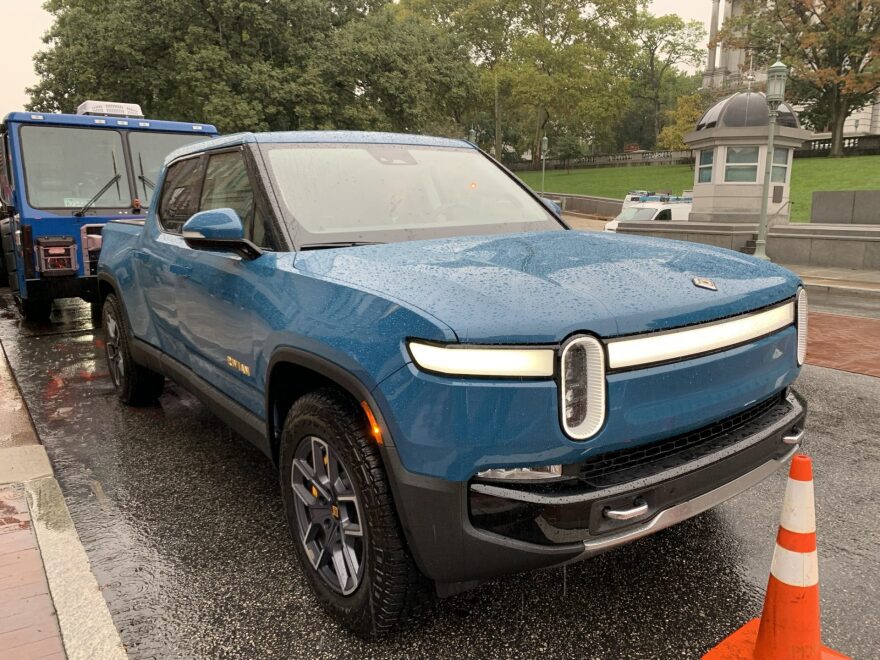- The Lehigh Valley Planning Commission on Wednesday hosted a workshop on decarbonizing transportation
- Transportation is one of the most significant contributors to emissions in the region
- There are two upcoming workshops scheduled
ALLENTOWN — Nobody wants a climate action plan on a shelf covered in dust, Becky Bradley said Wednesday afternoon.
“We want to make a difference, and we can start at least in one sector,” said Bradley, executive director of the Lehigh Valley Planning Commission. “So we're going to focus on that.”
The Lehigh Valley Planning Commission on Wednesday hosted “WorkshopLV: Environment + Transportation,” an almost two-hour long meeting to brainstorm and prioritize ways to decarbonize transportation from across the region.
Decarbonization is the process of reducing or eliminating carbon dioxide emissions.
The effort aims to garner feedback from local leaders and organizations as the commission works on a regional climate action plan. More than two dozen people from across the region participated.
While the state Department of Environmental Protection works on its plan for decarbonization, the LVPC is doing the same, Bradley said.
"We're focusing on the same thing — that's critically important. They're going to focus on more of the building-related items related to industrial decarbonization and transportation, and we're going to focus on the actual mobility components for our region."Becky Bradley, executive director of the Lehigh Valley Planning Commission
“We're focusing on the same thing — that's critically important,” Bradley said. “They're going to focus on more of the building-related items related to industrial decarbonization and transportation, and we're going to focus on the actual mobility components for our region.
“That allows us to make sure that our strategy is consistent with the state strategy, their climate action plan, and that it also meets these broader regional goals. That will help us in a whole host of ways.”
Earlier this year, commission officials announced they had received a $1 million infusion of federal funds after officials opted into the Climate Pollution Reduction Grant program, part of the federal Inflation Reduction Act.
With the funding, the LVPC must create a Priority Climate Action Plan, focused on industrial decarbonization, as well as a Comprehensive Climate Action Plan. The former is due March 1, while the latter is expected to be adopted in August 2025, officials said during a recent meeting of the commission’s Environmental Committee.
Why transportation?
A significant portion of greenhouse gasses emitted in the Lehigh Valley are attributed to the transportation sector, said Corinne Ruggerio, an environmental planner for the commission.
“From Lehigh Valley's Planning Commission's 2019 greenhouse gas inventories, the transportation sector contributed to 26.6% of the approximate 9.9 million metric tons of carbon dioxide emitted,” Ruggerio said. “The biggest contributor within the transportation sector came from gasoline vehicle travel within Lehigh and Northampton counties, as approximately 11 million miles per day are traveled on our roads.”
Reducing transportation emissions doesn’t just help the climate, but also benefits local residents, she argued, citing a September report from the Asthma and Allergy Foundation of America that ranked Allentown as the most challenging city in the nation to live with and manage asthma.
“Traffic patterns may perpetuate these conditions, as road use has been increasing in the region due to population and economic growth,” Ruggerio said. “Since we began monitoring vehicle traffic on both I-78 and Route 22 in May 2022, daily traffic on these roads has increased by 9% and 6 %, respectively..
“We anticipate that vehicle miles traveled and transportation demand will only increase given current trends, and it's projected that the Lehigh Valley's population will grow by almost 100,000 people by 2050. That is roughly equivalent to having another Bethlehem and Easton combined to the region.”
The commission’s 2021 greenhouse gas inventory showed 75% of emissions came from gasoline-powered vehicles, while 24.5% was contributed by diesel vehicles, she said. Comparing Lehigh and Northampton counties, the former has more vehicle emissions both from highway and off-highway travel.
An interactive activity
Near the end of the workshop, participants were asked to use green and blue sticky notes to choose which policies were most important to them. Blue meant participants felt that a policy or goal was important now, while green meant it was important for the future.
There was no consensus, but one of the most-noted policies was “Develop mixed-transportation network that supports more compact development pattern, alternative travel options and greater transit connections” by “enhanc[ing] transit serve and pedestrian bicycle facilities along corridors” and “improv[ing] connections between mass transit and pedestrian and bicycle infrastructure.”
Upcoming workshops
The commission has two workshops scheduled, Nov. 15 and Dec. 20, both at 11 a.m. at the commission’s Allentown office.
For more information, go to the LVPC’s website.


